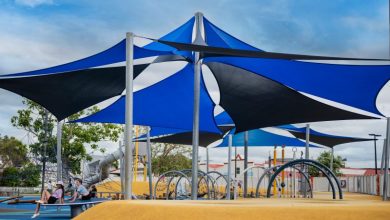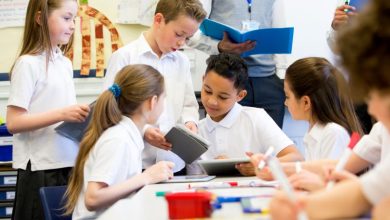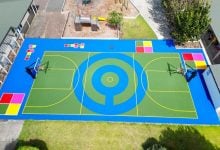Addressing the bullying issue
School can be difficult for students at the best of times, but throw in name calling, pushing, slapping, intimidation and even sexual and racial harassment, and the school years can be even tougher.
Bullying is a serious issue for many schools around New Zealand. An international report from 2008 ranked New Zealand second worst among 37 countries when it comes to bullying in primary schools. And, according to Caroline Ongleo, director of The Peace Foundation, this situation has not improved.
In 2011 the Ministry of Education reminded schools of their responsibilities and mandated them to review their anti-bullying policies, yet in 2012 more incidents of bullying in schools were reported – including one 14 year old South Auckland student who had been forced to change schools due to bullying; and a Christchurch teenager who was forced out of school just seven weeks before NCEA exams began.
“Bullying has become a big issue for schools over the last few years due to New Zealand, especially Auckland, becoming increasingly multicultural,” says Ongleo. “It is also due to the advent and accessibility of technology.”
So how can schools work to stamp out bullying amongst their students?
Schools can take advantage of one of any number of programmes on offer from different organisations that provide students with an understanding of how their words and actions affect others.
The Peace Foundation offers a Cool Schools Peer Mediation Programme that offers peaceful conflict resolution and peer mediation training to school staff and students. It teaches students the skills and processes to use conflict scenarios as an opportunity to build positive relationships with others.
“Schools successfully implementing the programme report that 80 – 85 per cent of minor disputes are settled permanently by peer mediators helping to make the school, both playground and classroom, a happier, safer, and more peaceful environment,” says Ongleo. “Students are providing a service for other students as peace-keepers. They are modeling skills and processes, which will last a lifetime and are readily transferable to the home, workplace and community,” she says.
Kia Kaha Youth Education Programme is run by the New Zealand Police and promotes a whole school approach to reduce bullying. Programmes are available at each level, from Year 0 through to Year 13, and cover topics suitable for each age group. At a younger level topics include acceptable classroom behaviour, recognising bullying and seeking help. Older students study the effects of bullying, strategies for managing bullying and the cycle of abuse.
Kidpower Teenpower Fullpower Trust NZ offers courses that teach students to cope with peer group pressure, keep safe when they are on their own and stop bullies through role-plays. And Netsafe provides a comprehensive cyber safety programme for New Zealand schools.
Bullying is a serious issue not only for schools but also for families and communities to address, says Ongleo.
But, with the help of education programmes such as those offered in schools, the knowledge that it is not cool to be a bully will soon be passed on to others in the community.
Ambassadors for social justice Students at Auckland’s Mt Roskill Grammar School are ambassadors for social justice, says the school’s counsellor Donna Hourigan-Johnston. Students at the school, which was one of the first in New Zealand to implement The Peace Foundation’s Cool Schools programme, stand up against bullying and harassment not just only in the classroom, but also in the wider community. Cool Schools, which was introduced to Mt Roskill Grammar in 1994, is a peer mediation service in which trained students from Year 11, 12 and 13 help other students resolve conflicts. This could be anything from a fall out in a friendship, being harassed or bullied, or simply a miscommunication that has got out of hand. “Often students want to talk to someone a bit older but not necessarily an adult,” says Hourigan-Johnston. “This is where Cool Schools really helps. It is an avenue for students to get help when things go wrong.” Students who want to use the peer mediation service refer themselves to student services. Hourigan-Johnston says if it is a conflict between a male and a female student then the mediation team is made up of a male and a female mediator. All mediations are kept completely confidential. If the issue is too big for the mediators to resolve, or it is not getting resolved, the students are then referred to the school guidance counselling team who offer counselling and restorative meetings. Since its introduction the programme has gone from strength to strength at Mt Roskill Grammar. Each year 100 new mediators are trained making a total team of 230 mediators. There are a number of different ethnicities at the school and these are all represented on the mediation team. Mediators go through a comprehensive training programme in their first year as mediators and learn how to communicate effectively and resolve conflicts in a constructive way. Further training is undertaken in their second year with input from the Human Rights Commission on racial harassment and from Rainbow Youth on harassment over student sexuality. “We often have more than 300 students apply to become mediators each year,” says Hourigan-Johnston. “It has such mana in the school that I haven’t started to advertise for this year’s mediators but we already have three pages of sign ups.” The programme has even been known to assist students in the next phase of their studies or personal lives. “I’ve had a lot of past students say they have used the mediation skills they learnt at Mt Roskill Grammar School when they attend university and join the work force,” says Hourigan-Johnston. “Others have used their skills with their own families and have introduced them to a more peaceful way to resolve conflict.” The popularity of the Cool Schools programme at Mt Roskill Grammar also comes down to students wanting to make a difference and help out their fellow students, says Hourigan-Johnston. “Young people just want to help others and gain skills that they can use later in life.” And with attitudes like that, it seems Mt Roskill Grammar School students will be ambassadors for social justice for some time to come. |
Conflict resolution The Peace Foundation has recently launched a unique conflict resolution programme for Maori schools and those with a high Maori population. Called Kia Tau te Rangimarie, the programme is currently running in four Kura and bi-lingual schools, and a further two schools are completing the second year of pilot testing. Jonnie Black, former Mt Roskill Grammar School mediator and co-ordinator of the programme says the Kura involved have responded positively to the programme and have seen how it is beneficial for tamariki. “Kia Tau te Rangimarie is designed to take a holistic approach to conflict resolution while incorporating contemporary models of dealing with conflict,” says Black. “The programme was designed and aligned with Te Aho Matua o Nga Kura Kaupapa Maori and Tikanga Maori. We have developed the programme for Maori by Maori.” The programme offers a number of benefits for both the school and students. Schools receive training resources, full teacher and parent training and student kaitakawaenga training, while students develop a range of skills they can use not only at school but also in the wider community and at home, says Black. “Students will gain positive reinforcement of identity, self esteem and develop leadership skills,” says Black. “The programme is a whole school approach that benefits all involved – teachers, students, parents and the wider community.” |









